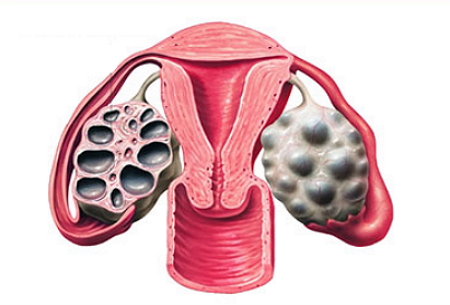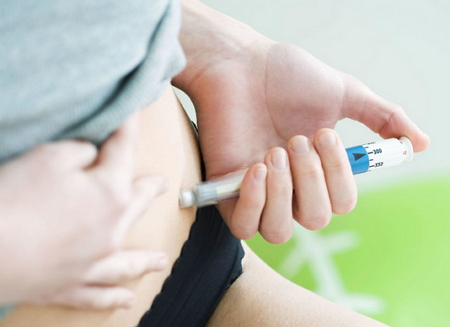Ovarian Hyperstimulation Syndrome

Contents:
- What is an Ovarian Hyperstimulation Syndrome?
- Symptoms of Ovarian Hyperstimulation
- Treatment of Ovarian Hyperstimulation
- Prevention of Ovarian Hyperstimulation
What is an Ovarian Hyperstimulation Syndrome?
Ovarian hyperstimulation syndrome is a reaction of a female body on drugs that are used to stimulate ovulation (maturation of an ovum and its coming from an ovary) in case of IVF.
Ovarian hyperstimulation syndrome is a good example of how a procedure seeming "harmless" can cause very big problems, and how quite natural desire to have children can be transformed into long-term inpatient treatment and receiving of shock doses of potent drugs. "How can a pregnancy be linked to an ovarian hyperstimulation syndrome?"- you will ask. Unfortunately, it can directly do; however, to understand the nature of the problem, a small, but quite relevant digression is required.
To date, it is not possible to pinpoint with accuracy any possibility of ovarian hyperstimulation, but experts have identified a so-called risk group, which includes patients, who have one or several factors:
- an elevated level of estradiol in blood;
- polycystic ovarian syndrome;
- allergic reactions in history;
- genetic predisposition;
- the age less than 35 years old;
- cases of hyperstimulation in the past.
Symptoms of Ovarian Hyperstimulation

Ovarian hyperstimulation symptoms are not always the same and may vary according to the degree of their manifestation. Symptoms of the syndrome can be divided into three groups.
The light degree is accompanied by the following symptoms:
- pain in the abdomen, bloating, feeling of heaviness;
- swelling of legs;
- deterioration of the general condition of a patient.
The moderate syndrome is accompanied by:
- dizziness, weakness, headache;
- pain in the abdomen, bloating, feeling of heaviness;
- nausea, vomiting, diarrhoea;
- the decrease in the frequency of urination and in amount of urine;
- deterioration of the general condition of a patient;
- swelling of hands, legs, external genital organs;
- weight gain.
The severe form has the following signs:
- dizziness, weakness, headache;
- severe pain in the abdomen "radiating" into the groin and increasing during physical activity;
- feeling of bloating, heaviness of the abdomen, an increase of its volume;
- fever;
- reduction of pressure;
- swelling of the entire body;
- reduced amount of urine and frequency of urination;
- difficulty in breathing, shortness of breath;
- heart palpitations, heart rhythm disorder;
- nausea, vomiting.
Treatment of Ovarian Hyperstimulation
To treat mild forms of the disease often requires quite small adjustments in lifestyle and diet of a patient, as well as ongoing monitoring by a gynecologist. Moderate and severe forms require monitoring of a patient in the hospital and the use of drug therapy; in the worst cases, peritoneal taps and plasma depletion are used. Ovarian hyperstimulation and concurrent pregnancy can complicate the condition of a patient.
Prevention of Ovarian Hyperstimulation
To prevent possible complications during treatment with the use of ART, women must adhere to the following rules:
- careful observance of all doctor's appointments during the treatment period and the preparations for it;
- minimizing of any possible psychological and physical stress;
- a thorough medical examination before stimulation;
- respect of the principles of rational nutrition and drinking enough liquid.
The primary method of preventing ovarian hyperstimulation syndrome is the individual approach of an attending physician to a patient during the procedure of superovulation stimulation and simultaneous use of effective and minimum doses according to the age, weight and medical history of the patient.
The whole period of drugs` intake requires careful and regular monitoring of the size of the ovaries, follicles, levels of estrogen in the blood, physical condition of the patient during and a few weeks after the treatment.